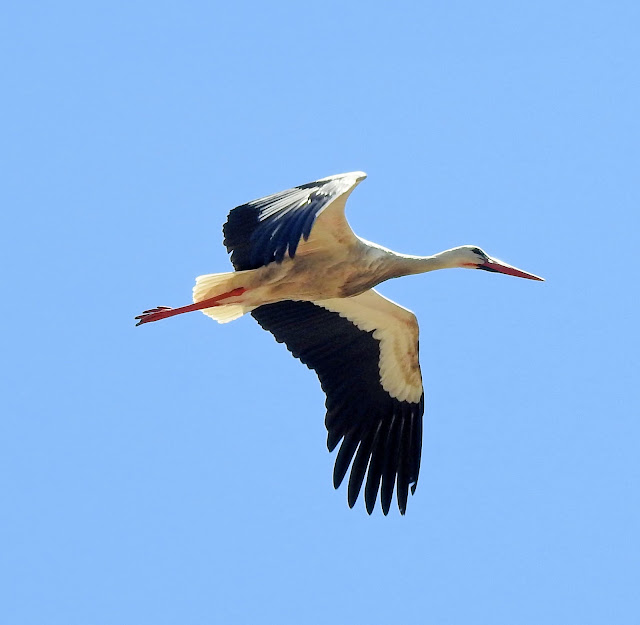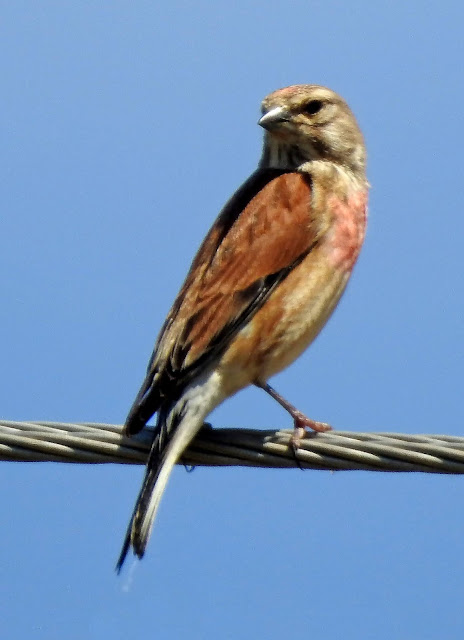This Blog contains Wildlife and Bird Photos from Walks, Safaris, Birding Trips and Vacations. Most of the pictures have been taken with my Nikon P900 and P950X cameras. On the right of the page are labels for each species of Bird/Animal etc. Click on a label to show all of the photos taken for that species. Information for each species is from Wikipedia. Just click on any image for a large picture.
TOTAL PAGEVIEWS
TRANSLATE
Wednesday, 2 June 2021
Tuesday, 1 June 2021
Monday, 31 May 2021
Sunday, 30 May 2021
30-5-2021 TABLAS DE DAIMIEL, LA MANCHA - EUROPEAN ROLLER (Coracias garrulas)
The European roller (Coracias garrulus) is the only member of the roller family of birds to breed in Europe. Its overall range extends into the Middle East, Central Asia and the Maghreb.
The European roller is found in a wide variety of habitats, avoiding only treeless plains. Nests usually in tree holes. It winters in Southern Africa - primarily in dry wooded savanna and bushy plains.
The European roller is a bird of warmer regions. The nominate subspecies breeds in northern Africa from Morocco to Tunisia, in southern and east-central Europe, and eastwards through northwestern Iran to southwestern Siberia. The subspecies C. g. semenowi breeds from Iraq and southern Iran east through Kashmir and southern Kazakhstan to Xinjiang. The European range was formerly more extensive, but there has been a long-term decline in the north and west, with extinction as a nesting bird in Sweden and Germany. The European roller is a long-distance migrant, wintering in Africa south of the Sahara in two distinct regions, from Senegal east to Cameroon and from Ethiopia west (with observations in the Degua Tembien mountains) to Congo and south to South Africa. Some populations migrate to Africa through India.
30-5-2021 TABLAS DE DAIMIEL, LA MANCHA - EUROPEAN ROLLER (Coracias garrulas)
This species is assessed as Least Concern. The population size and range are large and do not approach the thresholds for listing as Vulnerable and, although the population is still believed to be declining, the declines are not thought to be sufficiently rapid to warrant listing as Near Threatened. The European population is still thought to be declining but at a less severe rate and the Central Asian population is not thought to be suffering significant declines. Conservation actions in several countries have contributed to national recoveries.
In Europe, the breeding population is estimated to number 75,000-158,000 mature individuals (BirdLife International 2015). The European population is thought to hold around 40% of the global breeding range; therefore a very approximate estimate of the global population is 188,000-395,000 mature individuals or 282,000-593,000 individuals. The species is here placed in the band 100,000-499,999 mature individuals and 200,000-600,000 individuals.
Spectacular and distinctive: overall brilliant blue, with a rusty back and a stout, crowlike bill; juvenile plumage duller overall. Favors open and semiopen country with scattered trees and wooded patches; often takes larger insects, such as grasshoppers. Mostly seen singly or in small groups, perched on prominent perches, such as bare snags and wires, as well as on the ground. Quiet outside of the breeding season, when birds give harsh rasping calls.
Friday, 28 May 2021
Subscribe to:
Posts (Atom)































%201.jpg)
%2010.jpg)
%2020.jpg)
%2030.jpg)













